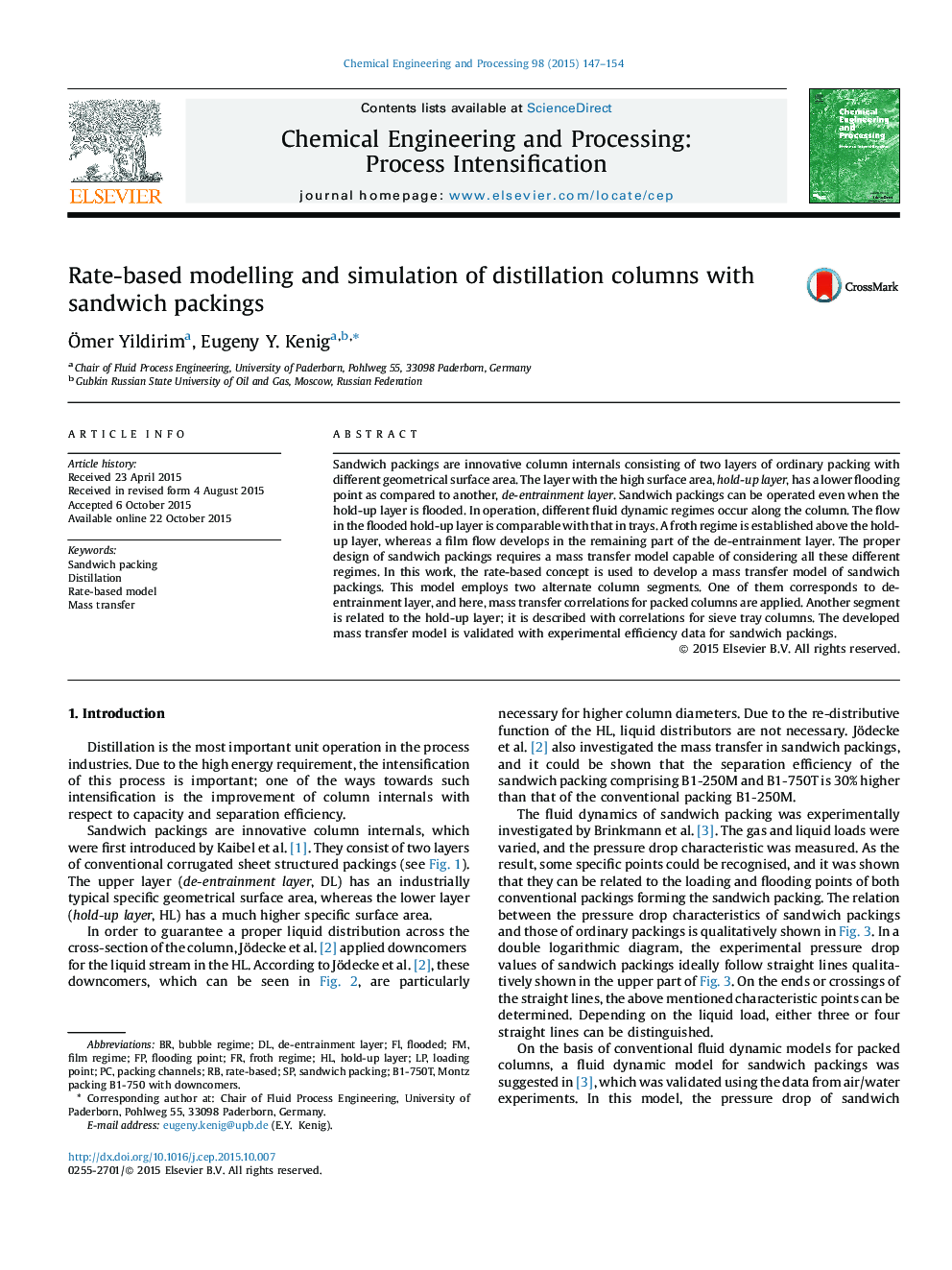| Article ID | Journal | Published Year | Pages | File Type |
|---|---|---|---|---|
| 687104 | Chemical Engineering and Processing: Process Intensification | 2015 | 8 Pages |
•The rate-based model was applied for the description of sandwich packings.•Different alternate packing layers were considered using different correlations.•The hold-up layer was modelled based on an analogy with a sieve tray.•The model was successfully validated using experimental data from the literature.
Sandwich packings are innovative column internals consisting of two layers of ordinary packing with different geometrical surface area. The layer with the high surface area, hold-up layer, has a lower flooding point as compared to another, de-entrainment layer. Sandwich packings can be operated even when the hold-up layer is flooded. In operation, different fluid dynamic regimes occur along the column. The flow in the flooded hold-up layer is comparable with that in trays. A froth regime is established above the hold-up layer, whereas a film flow develops in the remaining part of the de-entrainment layer. The proper design of sandwich packings requires a mass transfer model capable of considering all these different regimes. In this work, the rate-based concept is used to develop a mass transfer model of sandwich packings. This model employs two alternate column segments. One of them corresponds to de-entrainment layer, and here, mass transfer correlations for packed columns are applied. Another segment is related to the hold-up layer; it is described with correlations for sieve tray columns. The developed mass transfer model is validated with experimental efficiency data for sandwich packings.
